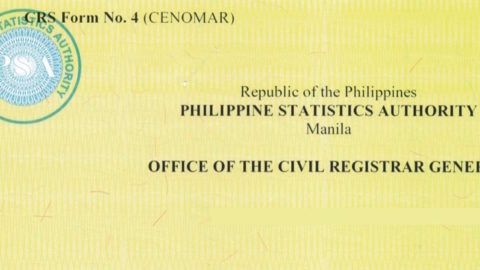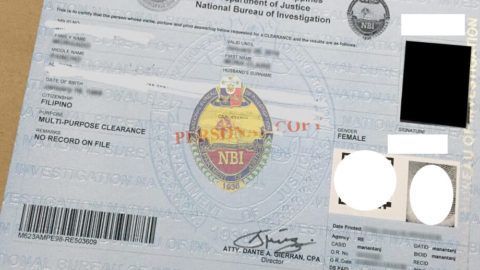By Franchesco Fickey Martinez
•
20 Sep, 2024
Estate Planning is more than just a Will or Trust. Planning can occur within 1 day, but some options may require implementation over the course of Years or Decades. This Article will tackle an often overlooked option: Custodial IRA for Children or Grandchildren . What is a Custodial IRA? A custodial IRA is a Roth/Post-Tax retirement account that an adult sets up and manages for a minor. The Child "Owns" the account, and the account can ONLY be funded with the Child's Earned Income. The custodian, usually a parent or grandparent, would be able to manage the account until the child turns 18 or 21, depending on the state's laws of when such accounts must be transferred to the child free and clear of the parent or grandparent. Apart from these Custodial Items, the IRA would act like a regular IRA. How can a Custodial IRA be used for Estate Planning Purposes? Leaving a Legacy is usually the main priority when a parent or grandparent is considering an estate plan. Another priority is helping the next generation to not struggle as much as the parent or grandparent struggled to build up their assets, their wealth, their estate. Small contributions when a child is a minor could have a lasting effect on the IRA's growth over the future decades, allowing the child to appreciate financial stability as well as see a first-hand example of the importance of saving, growing wealth, planning for retirement, and estate planning. Let's be honest, a child never ever thinks about retirement. They are not playing in the park, they stop and turn to mom and dad or to grandpa and grandma, and they ask: What should I do for my retirement? That doesn't happen. A 20 year old barely considers retirement. Sometimes, even a 30 year old does not see the need for retirement planning. Who does consider it? Someone who has worked a career, who has built wealth, who has planned for their own retirement, who is starting or revising their estate plan. A Parent or Grandparent thinks about retirement planning. What is an Earned Income? are children expected to work when they are a minor? YES! That is the catch of this IRA Option. The Contributions are technically coming from the paychecks of the minor. However, the child does not need to be working on their resume just yet. A common scenario is employing a minor child in a family business. A child between the ages of 5 to 18 can easily help with cleaning, taking out the trash, shredding paper, greeting clients, watering ornamental plants, and minor secretarial tasks. This employment can allow you to pay $50 or $100 a week. It would be a W-2 Employment, payroll would be documented every paycycle, and if ever needed by the IRS, there would be a substantial paper trail. Other common scenarios could be the seasonal jobs, such as: Dog Walking Dog Grooming Lifeguard Mowing Yards Babysitting It is important to note, the following DO NOT count as Earned Income: Gifts Investment income from items like stocks, CDs, and Real Estate Allowance from Household Chores Let's Consider a 10 year Hypothetical Example: The Custodial IRA does not have to break the bank. Let's use simple numbers and $50 weekly contribution. $50 is easy to swing. Here are the facts: Child is currently 8, 10 years from now Child will be 18 $50 weekly income/weekly contribution is $2600 annually IRA has a return/growth rate of 10% (again, easy numbers for example purposes) Over 10 years, $26000 is contributed. After 10 years, the above figures would have an estimated IRA Balance of $41,437.30. That is a nice 18th Birthday Present. NOW, assuming the child DOES NOT withdraw all or part of the money, what would happen if the following happened: $41,437.30 was left in the IRA until the child turned 58 (40 more years) $0 was added to the IRA for 40 years 10% grown/return happened year after year. The $26,000 that was added over the 10 year period (remember, it was just $50 a week) could be an estimated: $1,704,928.50 Yes, the IRA could be over one million dollars. All from just an executed plan (an estate plan) over the course of 10 years. Second Hypothetical Example: What if instead of $50 a week, it was the maximum annual limit (2024 limit is $7000). $7000 a years equals $583.33 weekly. Here are the facts: Child is currently 8, 10 years from now Child will be 18 IRA has a return/growth rate of 10% (again, easy numbers for example purposes) Over 10 years, $70,000 is contributed. The $70k that was added over the 10 years period could be an estimated: $111,561.97 NOW, assuming the child DOES NOT withdraw all or part of the money, what would happen if the following happened: $ 111,561.97 was left in the IRA until the child turned 58 (40 more years) $0 was added to the IRA for 40 years 10% grown/return happened year after year. The $70,000 that was added over the 10 year period could be an estimated: $4,590,192.47 The Child would likely hit millionaire status in the 40s, just from this one Custodial IRA. However, if this kind of savings is occuring, the child would likely become a millionaire in the 20s or 30s. How can the money/the Custodial IRA grow so much? Simple answer: Time and Compound Growth. The longer a dollar can be invested to earn the child money, the more money the dollar will earn. Why is a Custodial IRA Important? If you can teach children, from a young age, the importance of financial responsibility, the importance of saving and planning for retirement, you will leave behind a legacy far better than willing a house, or creating a trust. It would be a success if your children and grandchildren have even more wealth, more assets, more money than you have, when they reach your age. How do you get started? First,Contact an estate attorney to review your assets, liabilities, and overall retirement plan. The estate attorney can explain the process, assist with creating the trust or will, and explain asset transferring and your ultimate goals. An estate attorney can also have useful ideas, like starting a Custodial IRA. Second, start a custodial IRA at your preferred Brokerage, like Fidelity, Schwab, etc. It takes about 10 minutes to set up. This option is very beneficial to set your children or grandchildren up for future financial success. Disclaimer: This Blog is made available by the lawyer or law firm publisher for educational purposes only as well as to give you general information and a general understanding of the law, not to provide specific legal advice. By using this blog site you understand that there is no attorney-client relationship between you and the Blog/Web Site publisher. The Blog should not be used as a substitute for competent legal advice from a licensed professional attorney in your state.





















